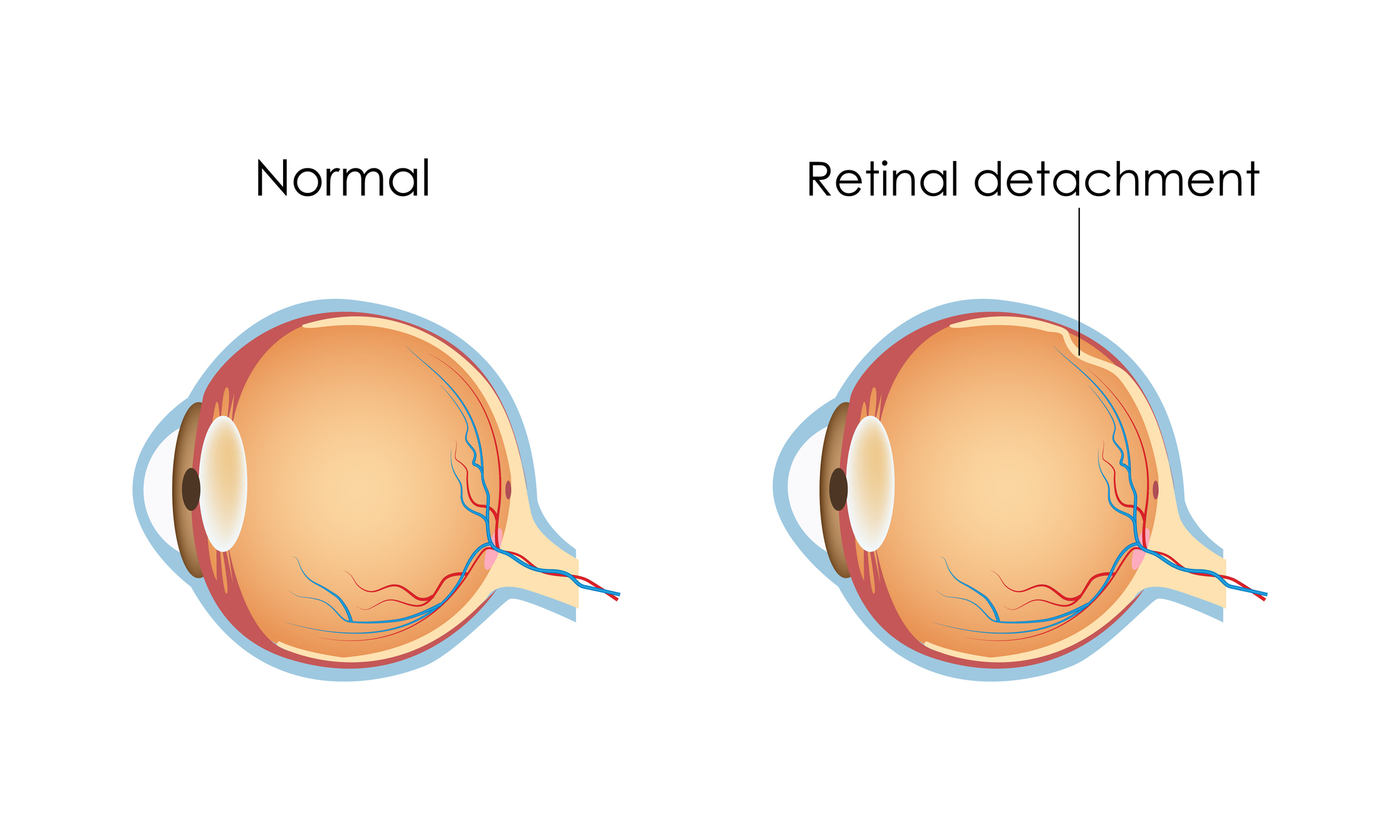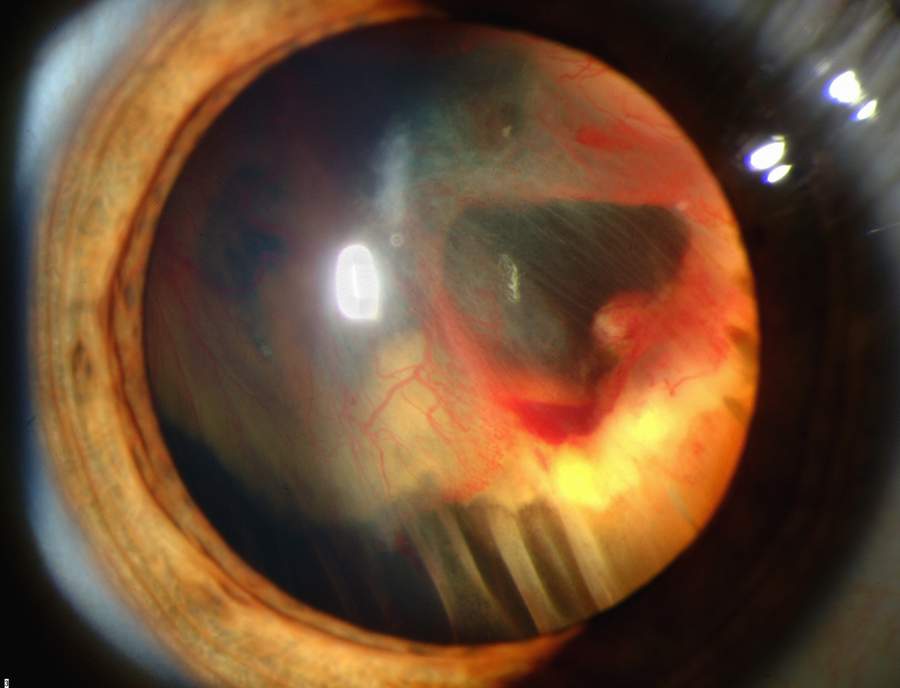Last Updated: January 14, 2025

What is retinal detachment?
The retina is a thin layer of tissue at the back of the eye. It is made up of tiny cells called photoreceptors, or rods and cones. These cells transmit light signals from the eye to the brain where it is interpreted as vision.
During a retinal detachment, the retina partially or completely peels away from the back of the eye. Once it is detached, the retina stops working and light signals cannot get back to the brain to be processed. Retinal detachment can lead to vision loss and even blindness.

Image1
What are the causes of retinal detachment?
Retinal detachment happens to around one in every 10,000 individuals every year or 0.01% of the population.2 It can happen to anyone but is more common among men and older individuals.3
There are many potential causes of retinal detachment:
- injury to the eye,
- a blow to the head,
- eye diseases,
- eye surgery,
- conditions such as diabetes, and
- excessive nearsightedness or myopia.
A retinal detachment can happen years after an eye injury or a blow to the head.
For reasons we don’t fully understand, some individuals may have areas where their retina is thinned. These areas might increase the chance of the retina detaching without any other obvious cause.
What are the symptoms of retinal detachment?
Symptoms of retinal detachment include:
- seeing flashing lights or floating spots in the field of vision,
- an overall decrease in vision, or
- a decrease in vision as a “curtain” or veil coming down into the field of vision.
Some patients experience no symptoms at all.
Video: What are the symptoms of a retinal detachment? | Dr. Heather Sangster
How is retinal detachment treated?
If your optometrist finds a retinal detachment during the eye examination, they will refer you to an ophthalmologist for surgery. The surgery aims to reattach the retina and prevent further vision loss.
If there are weak areas in the retina but no detachment, an ophthalmologist may choose to stabilize the retina to prevent a retinal detachment from happening. They can do this by using a freezing or laser treatment. The longer you wait to fix a retinal detachment, the less likely the surgery is to be successful.
How can I prevent retinal detachment?
Preventing retinal detachment can be difficult. Often, they occur spontaneously with no warning signs. However, there are some things that you can do to help prevent a retinal detachment:
- Always wear eye protection when performing high-risk activities such as sports and using power or yard tools.
- See your optometrist or ophthalmologist right away if you have any symptoms of retinal detachment. Retinal detachment is considered a medical emergency.
- Get routine eye examinations with your optometrist. Detecting and treating small retinal holes, tears, and detachments as soon as possible can stop them from getting worse.
References
- National Eye Institute/National Institutes of Health (http://www.nei.nih.gov/photo/eyedis/index.asp) [Public domain], via Wikimedia Commons.
- Ge, J. Y., Teo, Z. L., Chee, M. L., Tham, Y. C., Rim, T. H., Cheng, C. Y., ... & SNEC Surgical Retina Research Group. (2023). International incidence and temporal trends for rhegmatogenous retinal detachment: A systematic review and meta-analysis. Survey of Ophthalmology. Available from: https://www.sciencedirect.com/science/article/pii/S0039625723001595
- Ge, J. Y., Teo, Z. L., Chee, M. L., Tham, Y. C., Rim, T. H., Cheng, C. Y., ... & SNEC Surgical Retina Research Group. (2023). International incidence and temporal trends for rhegmatogenous retinal detachment: A systematic review and meta-analysis. Survey of Ophthalmology. Available from: https://www.sciencedirect.com/science/article/pii/S0039625723001595